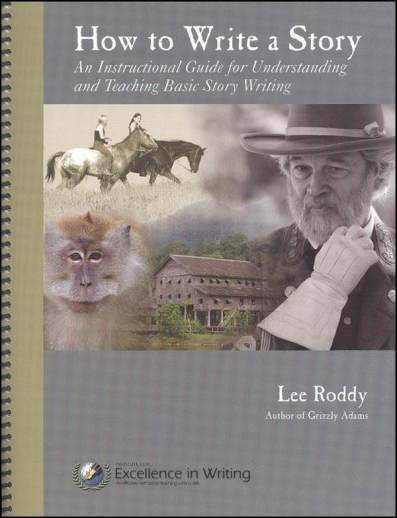We use cookies to make your experience better. To comply with the new e-Privacy directive, we need to ask for your consent to set the cookies. Learn more.
How to Write a Story
For years, teachers and aspiring writers have asked Lee Roddy (author of "Grizzly Adams," countless short stories, and over 50 novels) to compile a guide from his 20 years of convention seminars. This is that much-anticipated guide. Whether adults use this book to instruct young students or utilize the guidelines to write a best-selling short story or novel of their own, the practical system for writing laid out in this guide will be beneficial. This is not a workbook, and it's not very fancy either, but it lays out a straightforward approach to writing which has been proven to work for the author and many others. It's filled with tips, outlines, suggestions, and rules for writing techniques that will get students to write proper stories and enjoy it as well. The guide begins with a helpful introduction that tells teachers how to use the book and then contains eight lessons on ideas, story building, objectives, obstacles, outcome, characters, plots, and scenes. Goals and the importance of these eight story aspects, outlines, ideas for writing, examples, and so much more are included in each lesson. The end of each lesson also includes a few short-answer questions and a simple writing assignment that will help them use what they have just learned in their own writing. An encouraging conclusion is also included in the guide, with the author giving final tips for making sure your writing is strong and successful. A handy guide presenting a solid method for writing fictional stories. 88 pgs.
| Product Format: | Softcover Book |
|---|---|
| Grades: | 9-AD |
| Brand: | Institute for Excellence in Writing |
| Author: | Lee Roddy |
| ISBN: | 9780977986033 |
| Length in Inches: | 11 |
| Width in Inches: | 9 |
| Height in Inches: | 0.5 |
| Weight in Pounds: | 0.65 |
Be the first to review this item
I believe they could. There is a lot of information in each lesson, and if the student will be completing writing assignments at home then they may want their own book to have as a reference until co-op meets again. Also, each lesson has questions at the end with an allotted space so small for the student to write a response that each student would need to use a separate piece of paper even if they had their own book. There is not any space to mention for the student to do bookwork inside of this product.


My daughter was ready for a change from the type of English/Grammar & Writing class she’d been experiencing for 10 years. I chatted with a curriculum consultant who gave me a number of great options…
working on writing a good story
Required for co-op
Co-op